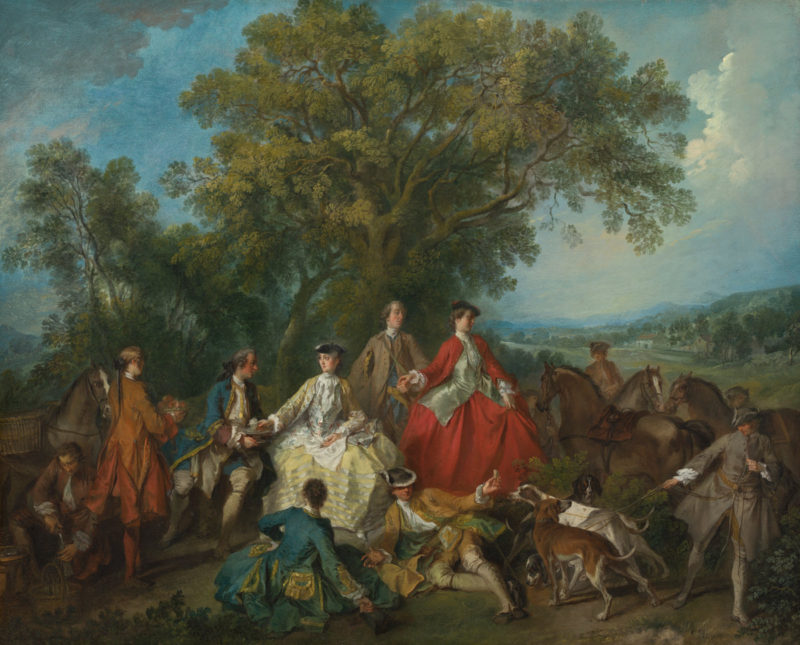Because the scene is obviously a picnic, the National Gallery of Art’s title, The Picnic after the Hunt, is apt. But Lancret, whose language was French, would not have used pique-nique because it refers to an indoor dinner. More likely, he would have titled un repas de chasse, as he did for a painting in the Louvre titled Un repas au retour de la chasse (1737).
Lancret’s elegant assembly for this repas de chasse is informal. But his hunters and their ladies are aristocratic and dressed a la mode for dining in the field. This assembly seems more likely to be on a chateau lawn than a forest clearing.
The custom of the repas de chasse continued through the Mid-Nineteenth Century as a popular subject for painting. It was highly recommended by Jean-Anthelme Brillat-Savarin, whose meditation on the “The Halt During the Hunt” in The Physiology of Taste, or Meditations on Transcendental Gastronomy (1825) who suggests that this repas is among the glories of dining alfresco or indoors. Charles Dickens, never a hunter, satirized the hunt picnic in The Pickwick Papers (1837). Twenty years later, Gustave Courbet, an avid hunter, included himself in the midst of a hunters’ luncheon, Le Repas de Chasse (1857), which is probably the epitome of the genre.
* Lancret’s women, not the hunters, are the center of attention. The prearranged meeting for this alfresco luncheon was called a tryst.
Featured Image: A fashionable lunch in the field. Nicolas Lancret. The Picnic after the Hunt (1740c.), oil on canvas. Washington, D.C.; National Gallery of Art
See Mary Holmes and Mark Leonard. Nicolas Lancret: Dance before a Fountain. Los Angeles: Getty Museum Studies in Art, 2006; Jean-Anthelme Brillat-Savarin, “The Halt During the Hunt in The Physiology of Taste, or Meditations on Transcendental Gastronomy (1825); Margaret Robinson. Courbet’s Hunt Scenes: The End of a Tradition. Providence, RI, 1990. Initially published in 1967.
Featured Image: Nicolas Lancret. The Picnic after the Hunt (1735/40), oil on canvas. Washington, D.C. National, Gallery of Art, Samuel H. Kress Collection
See Jean-Anthelme Brillat-Savarin, “The Halt During the Hunt” in The Physiology of Taste, or Meditations on Transcendental Gastronomy (1825)

